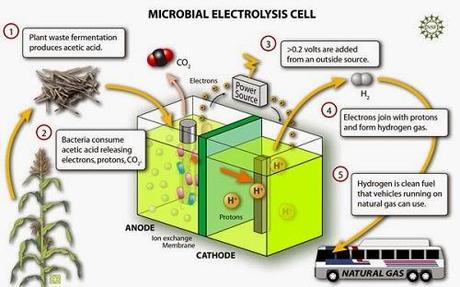 A research team at the University of California, Santa Cruz, has engineered a novel device that uses only sunlight and waste water to produce hydrogen gas. This acts as a sustainable energy source while improving the efficiency of waste water treatment.
A research team at the University of California, Santa Cruz, has engineered a novel device that uses only sunlight and waste water to produce hydrogen gas. This acts as a sustainable energy source while improving the efficiency of waste water treatment.How does this work?
The study has been published in the American Chemical Society journal ACS Nano. This device is made up of a microbial fuel cell (MFC) and a photo-electro-chemical cell (PEC) which is basically a different version of a solar cell. They use bacteria in the MPC to degrade organic matter--which generates electricity. This electricity is delivered to the PEC to split water to hydrogen and oxygen.
"The only energy sources are waste water and sunlight. The successful demonstration of such a self-biased, sustainable microbial device for hydrogen generation could provide a new solution that can simultaneously address the need for waste water treatment and the increasing demand for clean energy." Said Yat Li, associate professor of chemistry at the University of California, Santa Cruz, (ref)
Read full publication here -- Image source
